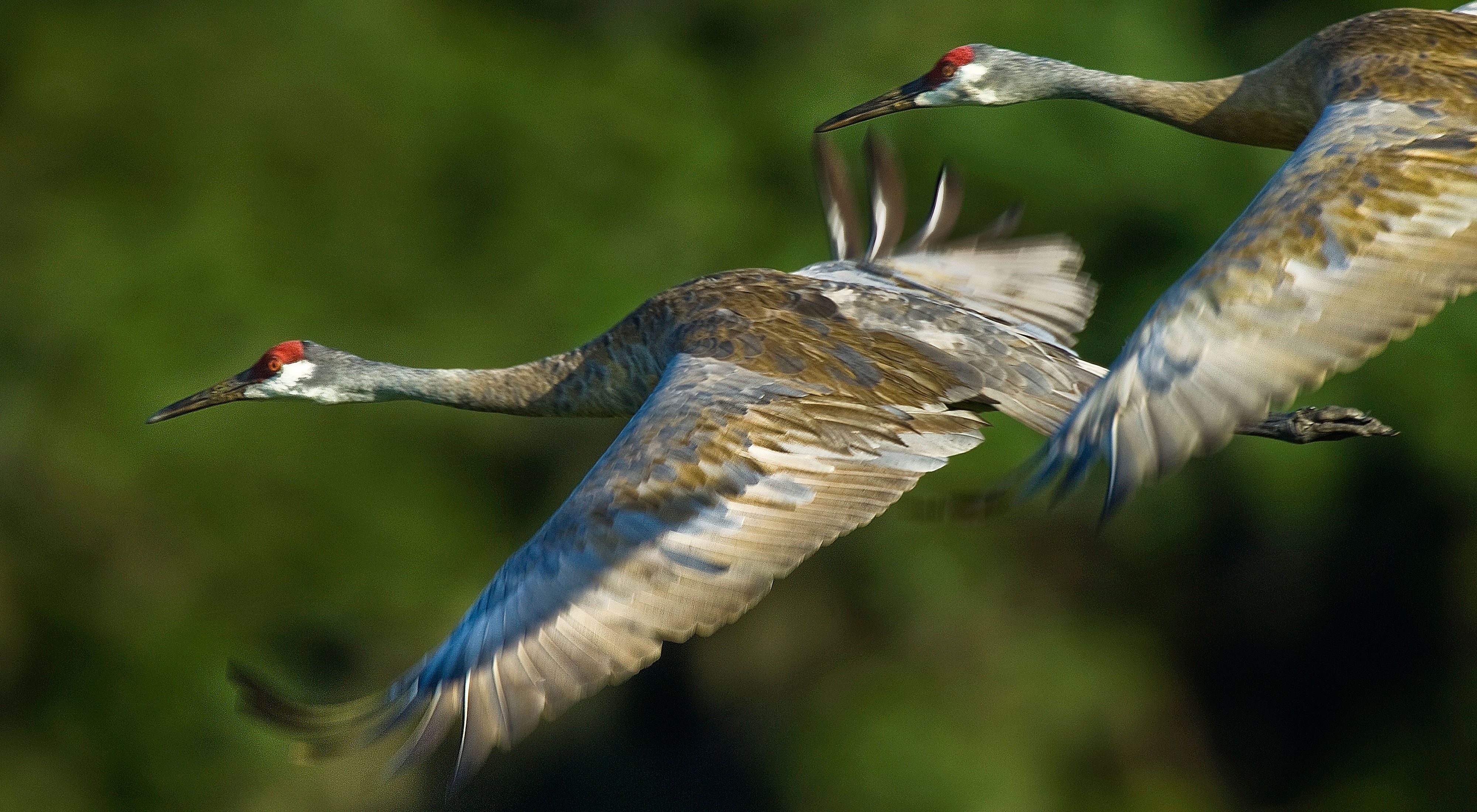Move over, Mario Andretti.
When it comes to speed and sheer endurance, the bar-tailed godwit will give you a run for your money. This shorebird makes the longest known nonstop flight of any migrating bird — logging 6,700 miles in nine days while traveling from its winter home in New Zealand to breeding grounds in Alaska and the Yukon.
Springtime’s arrival sends thousands of species in motion—walking, crawling, swimming and flying to their summer homes. For many creatures, the seasonal journey includes a layover in Washington, reminding us of the link between conservation here at home and around the world.
While the bar-tailed godwit is a rare migrant in Washington, other migrating creatures provide regular and thrilling opportunities for viewing in spring, fall and winter. We’ve compiled a list of our favorites.
The Top Five Must-See Migrations for Washington
1. Gray Whales
These mighty mammals arrive on the Washington coast in early spring and feed near the shores of Whidbey Island and Camano Island, sometimes venturing into Puget Sound and the Conservancy’s preserve at Port Susan Bay.
Gray whales fuel their 36-ton bodies by feeding on tiny animals in the mud, leaving “whale bites” — small pits that can be seen in the mud at low tide. One of the best places to watch them feed is Langley on Whidbey Island where they venture as close as 20 feet to shore.
Gray whales feed along Washington’s coast until July, giving locals plenty of opportunities for whale-watching. These animals move between Alaska and Mexico each year, slowly cruising more than 10,000 miles in 2-3 months from their warm-water breeding grounds to the cold North Pacific waters.
2. Sandhill Cranes
Each spring thousands of lesser sandhill cranes migrate through Central Washington on their way to breeding grounds in Southern Alaska. After wintering in California, these large, long-legged birds arrive in Washington in mid-February, with peak numbers in early April. On their way south in the fall, migrants have a shorter stay, usually only month, from mid-September to mid-October.
With wing-spans that can reach more than 6 feet, their springtime courtship rituals are a site to behold. An estimated 25,000 sandhill cranes migrate through Eastern Washington, and they’re both amazing to watch and to hear, as they communicate to each other with high-volume calls. The best areas for viewing are near Othello, where locals celebrate with a popular Sandhill Crane Festival each spring.

3. Salmon
Salmon touch just about everywhere the Conservancy works in Washington, from the coastal forests to the rivers and ocean. In the fall, they journey back to the rivers and streams where they hatched several years before. They spawn and then die, their bodies enriching the entire foodchain with marine nutrients.
Salmon return to rivers in spring, summer or fall, and the fall salmon migration can be viewed between October and December at two of The Nature Conservancy’s conservation areas: Ellsworth Creek and the Skagit River. The Skagit stands out as the only river in our state that supports all five native species of Pacific salmon; it also boasts the largest Chinook, chum and pink salmon runs in Puget Sound.
In terms of sheer numbers, it’s the pink salmon returns that are the most dramatic. These salmon only migrate every two years, and they return in the millions.
4. Shorebirds
Most shorebirds, or “waders,” arrive in Washington only twice a year – in the spring and fall. They migrate through our state quickly in spring, arriving in late April and early May as they travel to their arctic nesting grounds from the winter grounds in Central and South America.
Shorebirds boast superb fat-storing capabilities, giving them the energy to travel long distances. The long-distance record holder, the bar-tailed godwit, actually increases its body fat by 55 percent before launching its nine-day, nonstop flight, and smaller shorebirds can increase the size of their intestine by 100 percent before migration begins.
Shorebirds use the rocky seashores, sandy beaches, mudflats and tidal estuaries in coastal Washington and Puget Sound. Look for large groups of dunlins and other sandpipers at our Port Susan Bay Preserve or at the Nisqually Refuge. In Skagit County, be on the lookout for them feeding in flooded farmlands as part of the Conservancy’s Farming for Wildlife project.
More than half a million shorebirds also stop to feed at Grays Harbor, a globally important stopover on a major north-south migratory route known as the “Pacific Flyway.”
5. Eagles
All of the salmon that migrate back up the Skagit River don’t go unnoticed by area raptors. This migration of fins is eagerly followed by a migration of wings as bald eagles make their way to the Skagit each December and January. These regal birds come to feast on chum salmon and they come by the hundreds, making the Skagit one of the best places in the nation for viewing bald eagles in the winter. Folks at the Skagit River Bald Eagle Interpretive Center in Rockport are there to help. They outfit eagle-watchers with directions, tours and tips.
